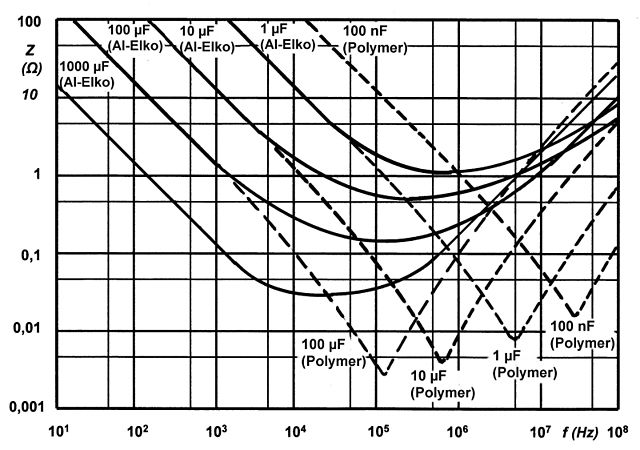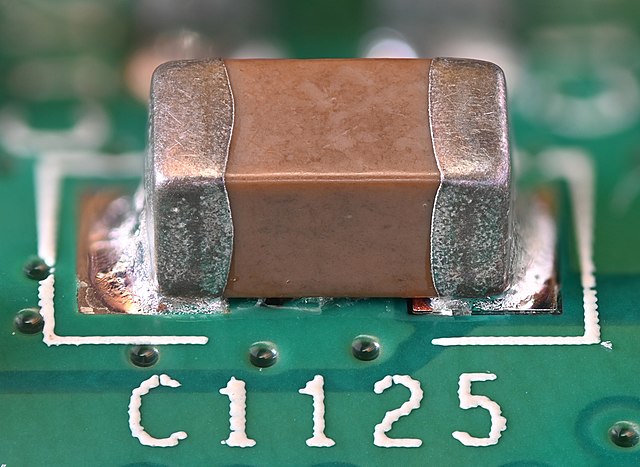In electronics, a decoupling capacitor is a capacitor used to decouple one part of a circuit from another. Noise caused by other circuit elements is shunted through the capacitor, reducing its effect on the rest of the circuit. For higher frequencies, an alternative name is bypass capacitor as it is used to bypass the power supply or other high-impedance component of a circuit.
Capacitor packages: SMD ceramic at top left; SMD tantalum at bottom left; through-hole tantalum at top right; through-hole electrolytic at bottom right. Major scale divisions are cm.
Impedance curves of aluminum electrolytic capacitors (solid lines) and polymer capacitors (dashed lines)
1980s Commodore 64 main board. Most of the "orange" round disc parts are decoupling capacitors.
1980s Cromemco XXU, a Motorola 68020 processor S-100 bus card. The axial parts between the ICs are decoupling capacitors.
In electrical engineering, a capacitor is a device that stores electrical energy by accumulating electric charges on two closely spaced surfaces that are insulated from each other. The capacitor was originally known as the condenser, a term still encountered in a few compound names, such as the condenser microphone. It is a passive electronic component with two terminals.
Capacitor
Battery of four Leyden jars in Museum Boerhaave, Leiden, the Netherlands
A simple demonstration capacitor made of two parallel metal plates, using an air gap as the dielectric
A surface-mount capacitor. The plates, not visible, are layered horizontally between ceramic dielectric layers, and connect alternately to either end-cap, which are visible.








